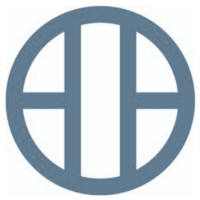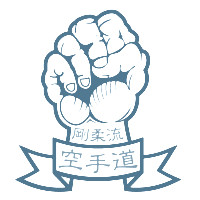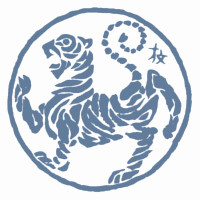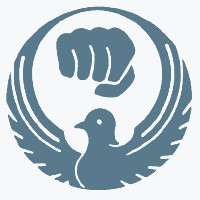Karate
Karate
KARATE BEGINS AND ENDS WITH RESPECT
Karate or better Karatedo is an unarmed martial art, also known under the name of Okinawa, developed on the Ryukyu Islands today.
The Ryukyu Islands were formerly a separate independent kingdom that held a convenient location to both China and Japan and was therefore used as a trading post between the two nations. Under the rule of King Sho Shin in the second Sho Dynasty, which lasted until 1879, all local warlords were disarmed. This event led to that the karate, developed as an unarmed martial art, as well as the Kobudo that the use of former weapons including with everyday.
The Satsuma invasion in 1609 led to a dependence of Japan, which also had an effect on the martial arts, so now in addition to the Chinese Kempo and Japanese swordsmanship had taken effect on the Karate.
The starting points of the style developments in the cities of Shuri karate, Tomari and Naha apply, with the towns of Shuri and Tomari the Shorin-Ryu and Naha is assigned to the Shorei-Ryu. The Shorin-Ryu from Shuri is the oldest of these styles with the characteristics of Chinese Kempo can be seen most clearly in Shorei-Ryu.
Among these styles, today's styles have evolved. The most widespread styles are Shito-Ryu, Goju-Ryu, Wado-Ryu and Shotokan.
SHITORYU
 Style Founder: Mabuni Mabuni
Style Founder: Mabuni Mabuni
The name "Shito" for his style led Mabuni Mabuni from the name of its two masters (Itosu and Higoanna), the "Shi" Japanese syllable of "Ito" represents and derived "To" from the character "Higa" of Higoanna is.
The Shito-Ryu thus includes forms from the Shorin-Ryu and the Shorei-Ryu.
Mabuni Mabuni himself was considered Kataexperte his time. The Shito-Ryu thus includes more kata than all other styles together. However, today has been handed represent only about 30% of all those who Mabuni studied.
GOJU-RYU  Style Founder: Kanryo Higaonna
Style Founder: Kanryo Higaonna
Goju, consists of the two syllables of "hard" and "soft" together. For these styles are soft defense techniques, the hard attack techniques follow distinctive. Similarly, the positions have a centering center of the body to center of gravity.
The Goju-Ryu emerged from the Shorei and is therefore the Naha-Te assign.
SHOTOKAN  Style Founder: Gichin Funakoshi
Style Founder: Gichin Funakoshi
Shoto means "the sound of the pine tree tops" and was once the pen name Funakoshi. The later was Funakoshi's dojo thus also under the name "Shotokan" known ("Kan" = house).
The origins of this style are in Shorin-Ryu. Characteristic of this style are deep, permanent stalls and forceful movements.
WADO-RYU  Style Founder: Hironori Otsuka
Style Founder: Hironori Otsuka
The Wado-Ryu ("Wa" = harmony, peace; "Do" = path) has its origins in both the Karate and Ju-Jitsu. Otsuka dealt next karate before he brought forth his own style with various other Japanese martial arts.
ls characteristic of the Wado-Ryu are above all the following things:
"No unnecessary force"
"No unnecessary movements"
"No unnecessary Techniques"
The basis of all styles applies the kata. A kata is a sequence of different individual techniques (Kihon) and represents a struggle against an imaginary opponent dar. Since it was not possible earlier as today to take advantage of digital media, the martial art was and transmitted orally in form of various kata by practical guide. It was common to train a kata over several years.
The third pillar of Karate (next Kihon and Kata) is the Kumite Kumite dar. In the techniques learned with a partner to be practiced together. First, agreed, but then more and more free thus should distance feeling, responsiveness and controlled use of technology will be trained. Here, to develop a better self-control, self-confidence and inner peace, which can be crucial in the fight.
At the beginning of the 20th century masters such as Funakoshi, Mabuni or began to spread her karate in Japan. They established schools in different cities in Japan and taught karate at universities.
Karate was formerly known as "Chinese hand", but renamed it to over the years in Karate ("empty hand") in order to conceal his part Chinese origin. Also Kata as the Pinan series fell victim to this phenomenon and were simply renamed "Heian".
In this way they tried to spread karate in Japan as a distinct martial arts. It was also the view of the Karate Budo to understand and thus to obtain recognition by the Japanese company, which was set very critical to Karate opposite, this martial art originated from Okinawa yes, that was not yet fully accepted as part of Japan.
Eventually the masters that karate was recognized as a martial art in the sense of Budo. As in other Budokampfkünsten applies in karate the principle of "Shin-gi-tai" that which from the spiritual ("shin") reveals what made art ("gi") comes from and what the physical aspects ("tai") is contributed. It describes the mental attitude to win, but no one injured want to.
In karate there is the principle of "Karate ni sente nashi" which means "in karate there is no first attack." This phrase is often interpreted to mean that one in case of attack should not take the initiative first. However, in the true sense of this sentence means that the karateka does not even try to engage them in a debate. It is the dispute in advance out of the way by not even getting into a confrontation and places that provoke this avoids. You win the fight by not even discharged him.
By teaching at universities had developed over the years into a popular sport karate. For the purposes of some meant Karate Karate masters should be able to be operated by any person, as it has a positive impact on the health and character of the people.
It was a concept developed by the now as in the military, many people could be informed at once. So the training in groups, as well as the belt system was introduced after is still trained. It was now possible to teach many people at once in Karate. This was previously not common, since a master usually had only a few students.
This development took place above all in the years after the Second World War and take karate now spread not only in Japan but also in other parts of the world.
In addition to the grassroots a way was sought to discharge Karate as a competition, which is then finally succeeded. Well karate could also be discharged in a sports fair comparison of individuals against each other, but dangerous techniques (such as on vital points) were banned in Kumitewettkämpfen because they represent too high a risk of injury.
Today karate is taught as a martial art, self defense competitive sport and health sports.
In karate club Budokan Kaiserslautern eV, it is possible to train his karate training according to the aspects mentioned above. Through motivation and team spirit, as well as training in effective group sizes, it is possible to make progress quickly. On top of that increases through constant training, concentration and self-assertion of exercisers.
The coach of the Budokan Kaiserslautern, Marcus Gutzmer, is a graduate of the DOSB coach, trainer RKV country, club manager A, and A-examiner in Shotokan and SOK. With these qualifications, a very high-quality training is assured.
In Budokan Kaiserslautern train karate from the 2.Lebensjahr and over age 60. This large age range requires a sound knowledge of the health of the human body. In training, constant attention to the correct posture to prevent knee and back injuries.
It is possible at any time to enter the beginners groups and without obligation to complete a trial.
sources:
www.karate-news.de
Wikipedia (History of Ryukyu Islands)
Toshiya Mabuni Mabuni - Empty Hand
Henning Wittwer - Shotokan




